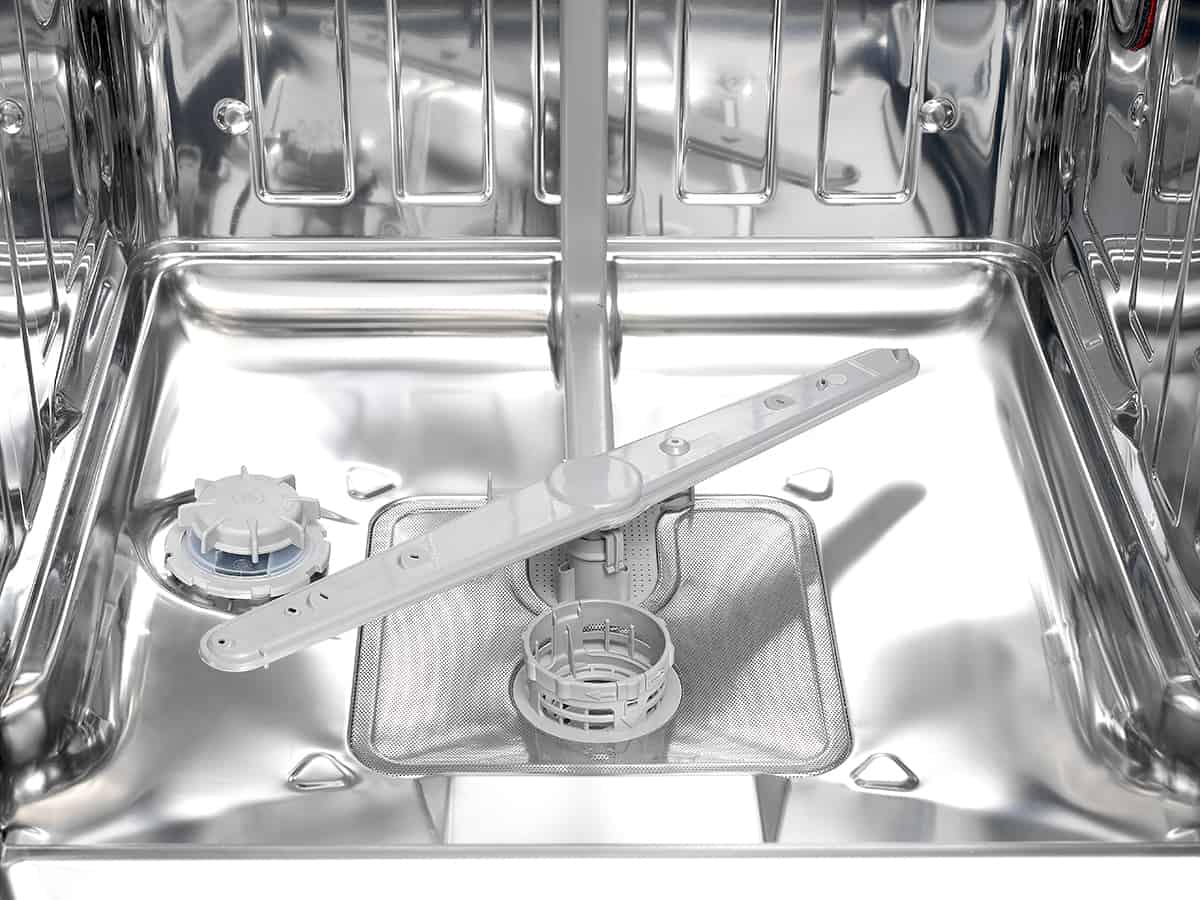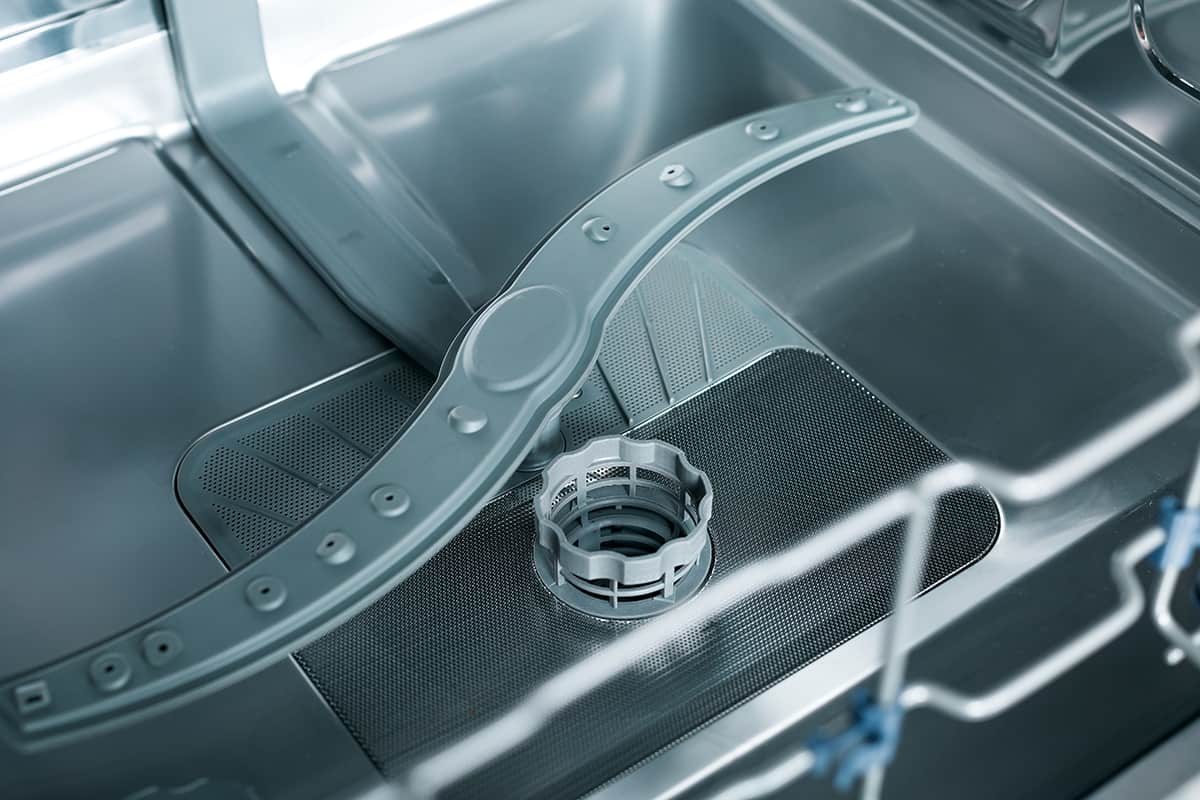The arm of a dishwasher refers to the parts that spray water all over the interior of the appliance. They are responsible for washing and rinsing your dishes, so if they are not spinning, your dishes won’t come out sparkly clean. So, what should you do if the dishwasher’s arm does not spin?
If the dishwasher’s arm doesn’t spin, it could be a sign that parts of the dishwasher are damaged and need to be replaced. However, there could be other causes of this problem, including a broken water valve, a broken overfill float switch, or even a worn-out arm.
If the dishwasher’s arm doesn’t work, this could be a cause for concern. Sometimes, you can fix the problem on your own. Other times, the problem could be a lot more serious. In this guide, I’ll explain how a dishwasher arm works and what causes a dishwasher’s arm to not spin, how to fix the problem.
How Does a Dishwasher Arm Work?

After removing the dishwasher’s arm, you might have noticed that it is not connected to a motor. So, how does it spin on its base?
The answer is water pressure. When the dishwasher enters the rinse phase, high-pressure jets of water is forced through the inlet valve, which then exits the arm through its many holes. When this happens, the water comes pouring in faster than it can exit, which causes the arms to spin while releasing pressurized water.
While it is technically a moving component, it’s less prone to wear and tear than other parts of the dishwasher. However, as your dishwasher grows older, the arm may become one of the first parts to require maintenance.
Now, let’s check out the possible causes and solutions to dishwasher arms not spinning.
Causes and Solutions to Dishwasher Arms Not Spinning

You can notice when the dishwasher’s arm does not spin. Firstly, your dishes will not receive an ounce of water. That is because the arm is responsible for distributing water across the entire inside of the dishwasher to clean all your dishes and cookware.
There are several reasons why the dishwasher arm does not spin. We will explore those reasons below and their possible solutions, many of which will not require hiring a professional technician.
Malfunctioning Water Valve
As the most common cause of malfunctioning arm, the first thing you should inspect is the water valve. If the water valve fails to operate correctly, it can lead to insufficient water flow, which prevents water from making its way inside the dishwasher. This, in turn, means that the arm has nothing to spray.
What you will have to do is turn the dishwasher off and inspect the inlet water valve and ensure that it is positioned correctly. You can do this by looking at the lower-left side of the unit and checking behind the kick plate. In some dishwasher models, you will have to remove the front panel to gain access to the valve.
Malfunctioning Overflow Float Switch
In a dishwasher, the overflow float switch is in charge of regulating how much water enters the appliance. It will allow more water during heavy-duty wash cycles and less water during normal or half-load cycles. Over time, the component may experience wear and tear, which may result in it preventing water from entering the machine entirely.
To access the overflow float switch, turn off the dishwasher and remove the dishracks. Next, lift the float—the part of the dishwasher located near the front—and inspect it for clicking noises. A faulty float will not produce any noise as you lift it from the tub.
In this case, you will have to purchase a new overflow float switch and possibly hire a professional technician to install it for you. The switch usually becomes problematic after the 6-year mark, but it’s possible for it to prematurely wear out due to excessive usage.
Worn-Out Spray Arms
Another common culprit behind why your dishwasher’s arm does not spray any water is that the arm itself is faulty. They are usually one of the first components in a dishwasher to succumb to age. Luckily, there are 2 possible solutions to this problem, neither of which requires hiring a trained technician.
Clogged Spray Arms
Since the spray arm is located at the base of the dishwasher, it can become clogged with old food remnants. In extreme cases, there will be calcified buildup inside the tiny holes, which, if left untreated, can prevent water from pouring out of the arm.
So, if your dishwasher is over 6 years old, it might be long overdue for a cleaning. Shut off the dishwasher, remove the dishracks, and locate the arm. Now, twist it while gently lifting it away from the base until it pops off. Submerge it in a tub or basin of a soapy solution for 30 to 60 minutes. After that, you can use a toothpick or a similar tool to poke into the holes and dislodge any solid buildup.
After you have cleared all of the holes, reinstall the arm, turn the dishwasher on, and give it a test rinse cycle. If this didn’t solve the problem, then the entire arm may be faulty.
Broken Spray Arms
In very rare cases a dishwasher’s spray arm will malfunction, especially before the dishwasher is 6 or 7 years old. However, over time, even a simple cleaning trick will not suffice. So, it might be time to replace the arm.
First, shop for a compatible arm for your dishwasher. You should check out the same store you purchased the dishwasher from or check out the manufacturer’s website. If your dishwasher is younger than 5 years, odds are you’ll find it there.
When you have the replacement arm ready, shut off the dishwasher and remove every dishrack from within. Look at the bottom of the dishwasher for the arm and give them a twist while gently pulling it away from the dishwasher’s base. When it pops off, set it to the side and install the replacement arm.
Give it a test spin to see whether it rotates freely on its base before reinstalling the dishracks, plugging in the dishwasher, and running a test rinse cycle. If this fails, then the dishwasher’s pump or another vital component may be broken, which might require the help of a trained technician to diagnose and repair.






